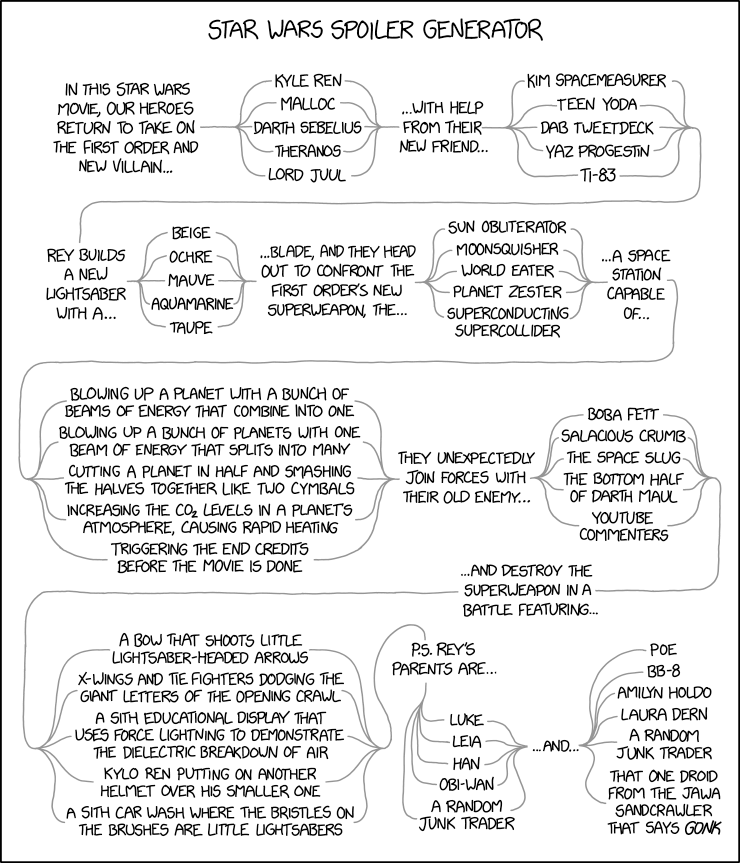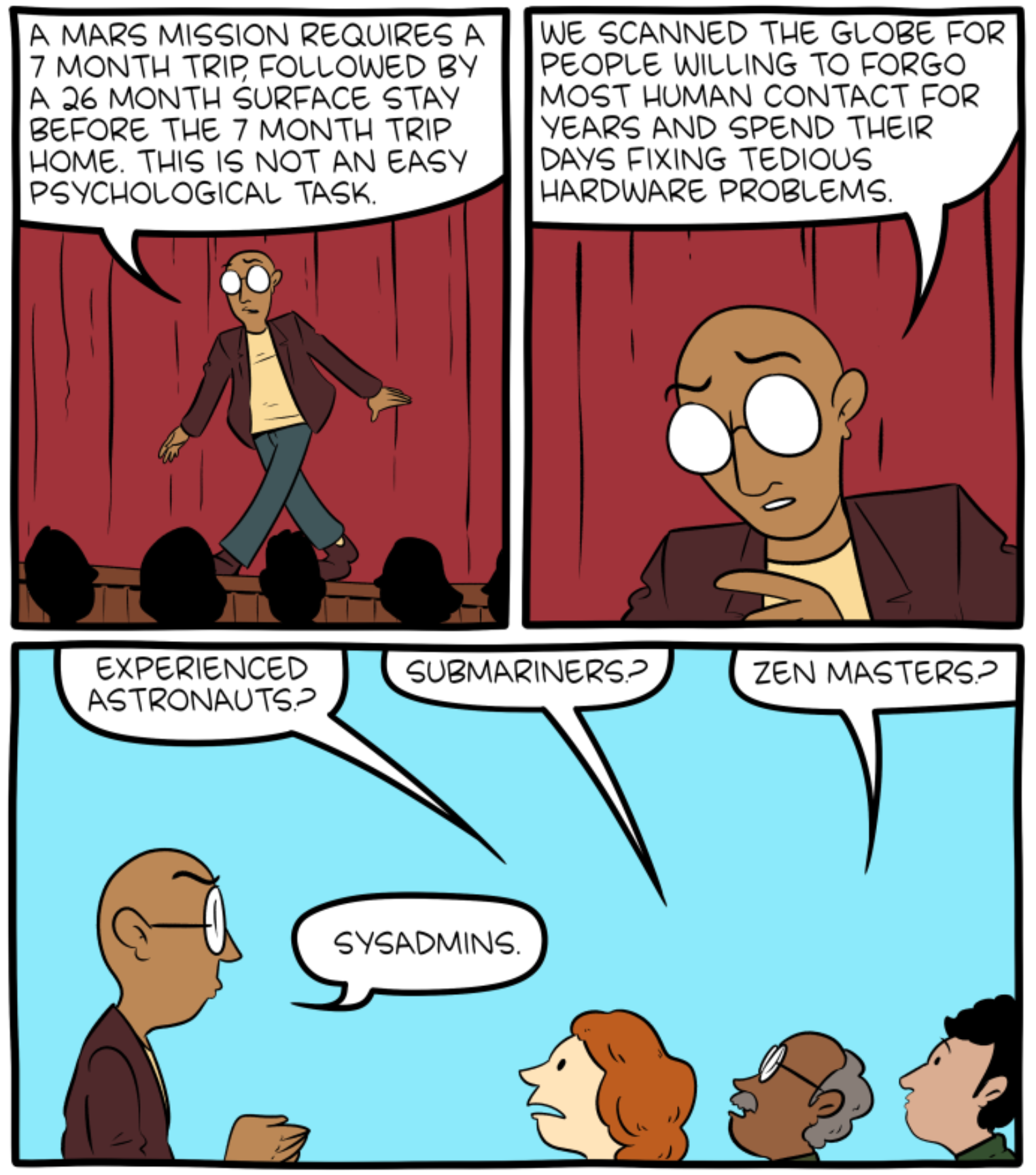Long ago, in a narratology far away…
Louisa Shepard, "‘May the force be with you’ and other fan fiction favorites", Penn Today 12/18/2019:
Starting with Star Wars, Penn researchers create a unique digital humanities tool to analyze the most popular phrases and character connections in fan fiction. […]
The Penn team started with the script of “Star Wars: The Force Awakens” and created algorithms to analyze the words in the script against those in millions of fan fiction stories. The unique program identifies the most popular phrases, characters, scenes, and connections that are repurposed by these writers and then displays them in a simple graph format.
The results are now available on their “fan engagement meter” at https://fanengagement.org.
Serendipitously, today's xkcd:
Read the rest of this entry »



